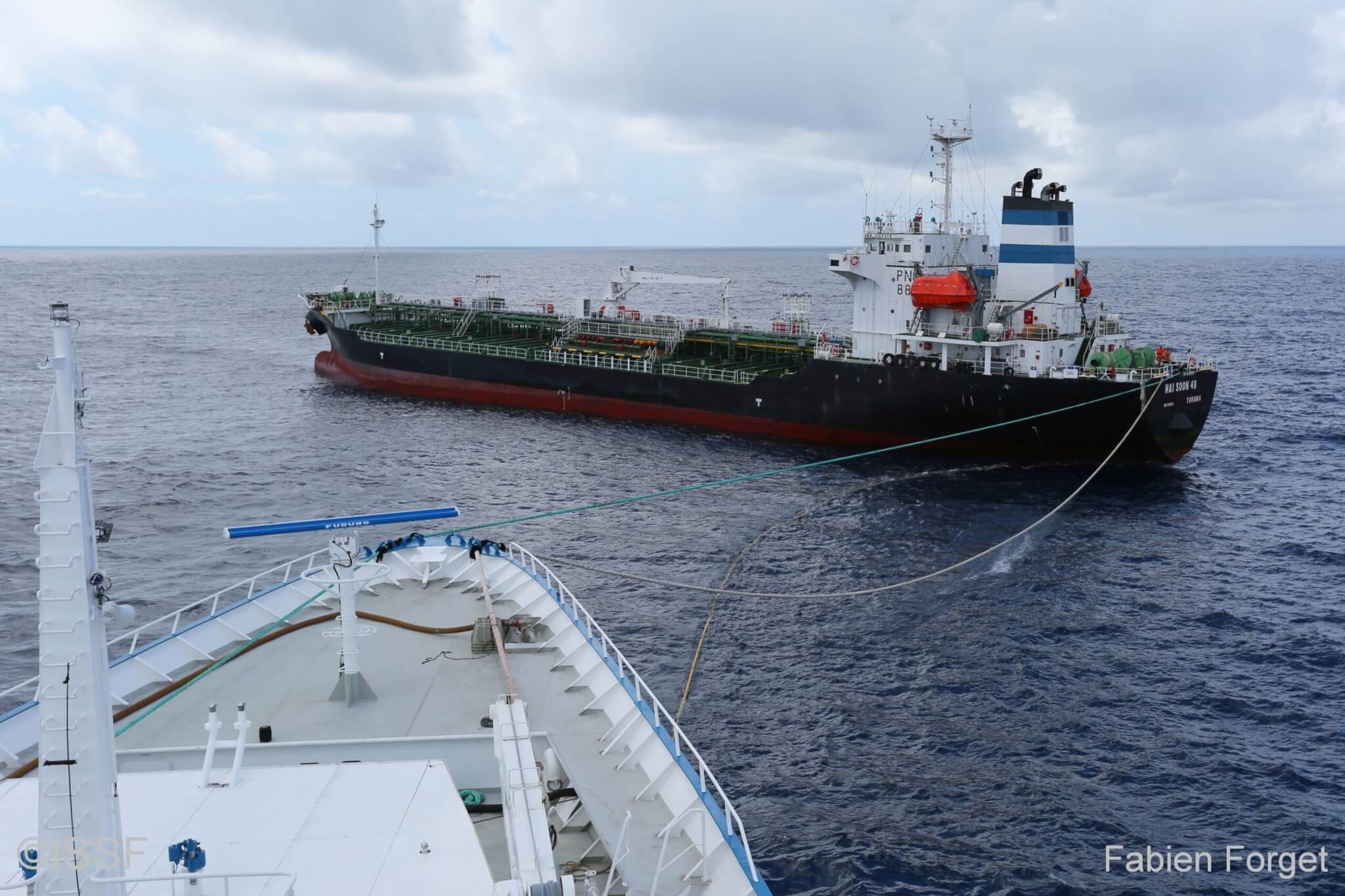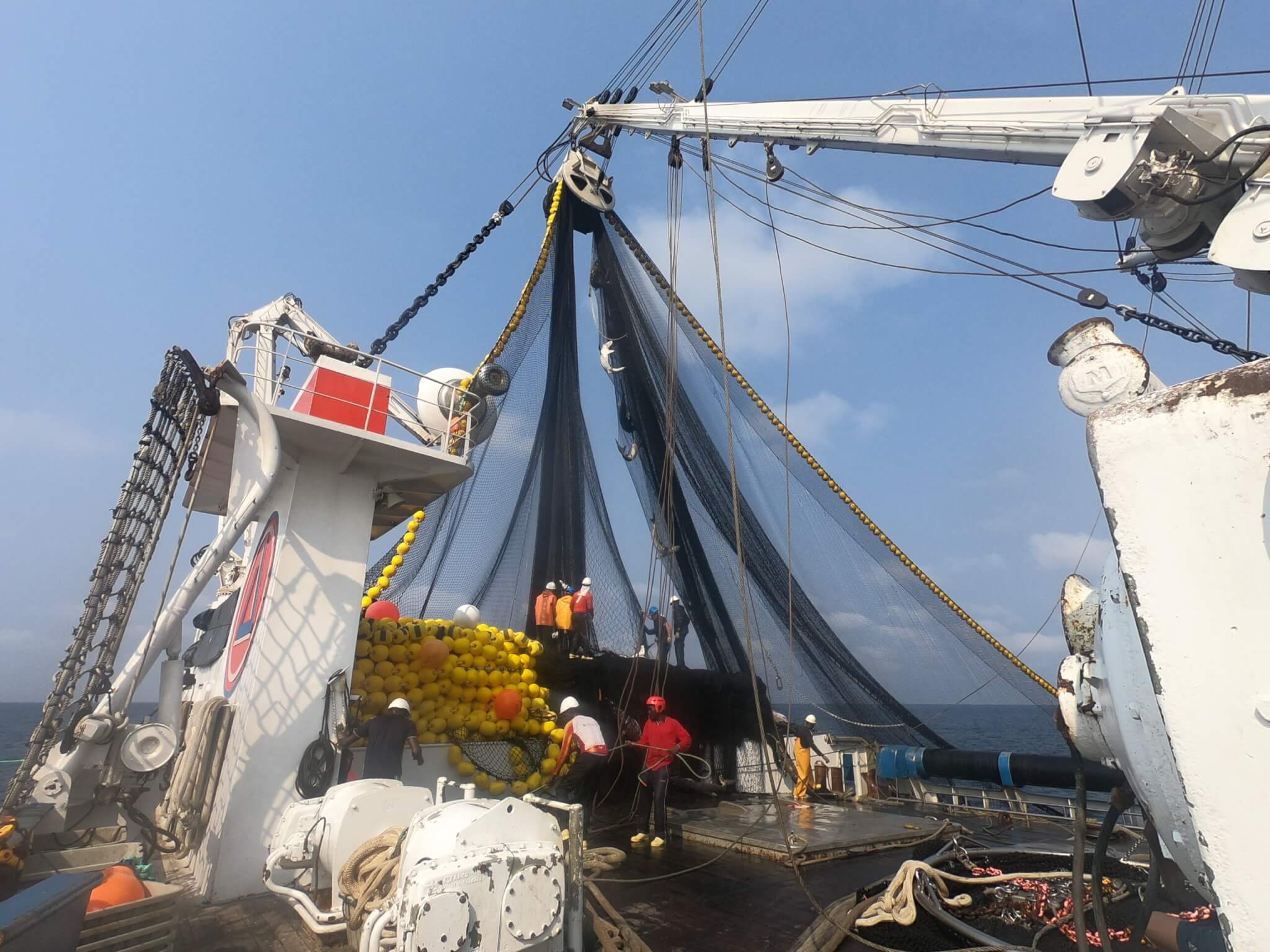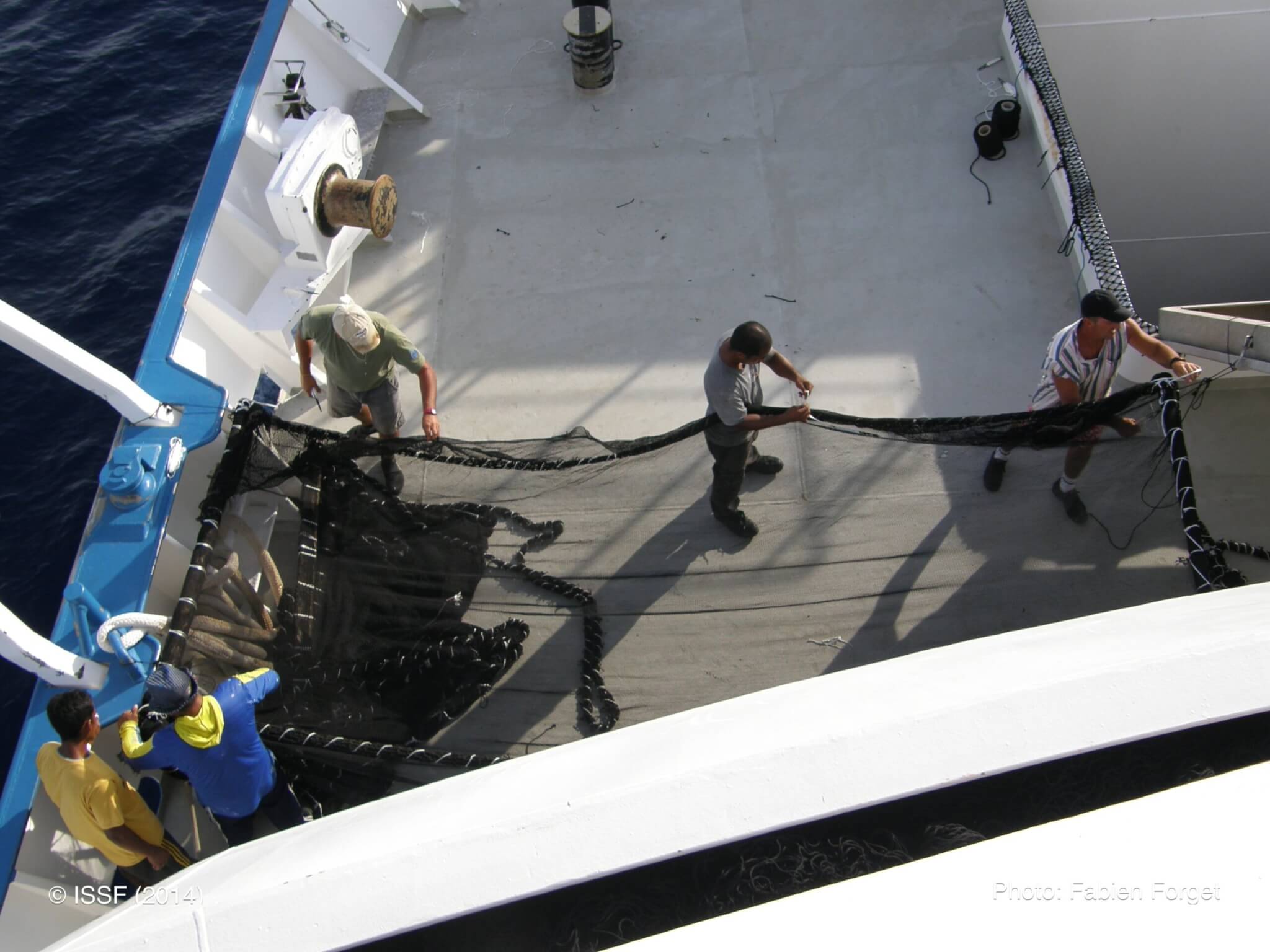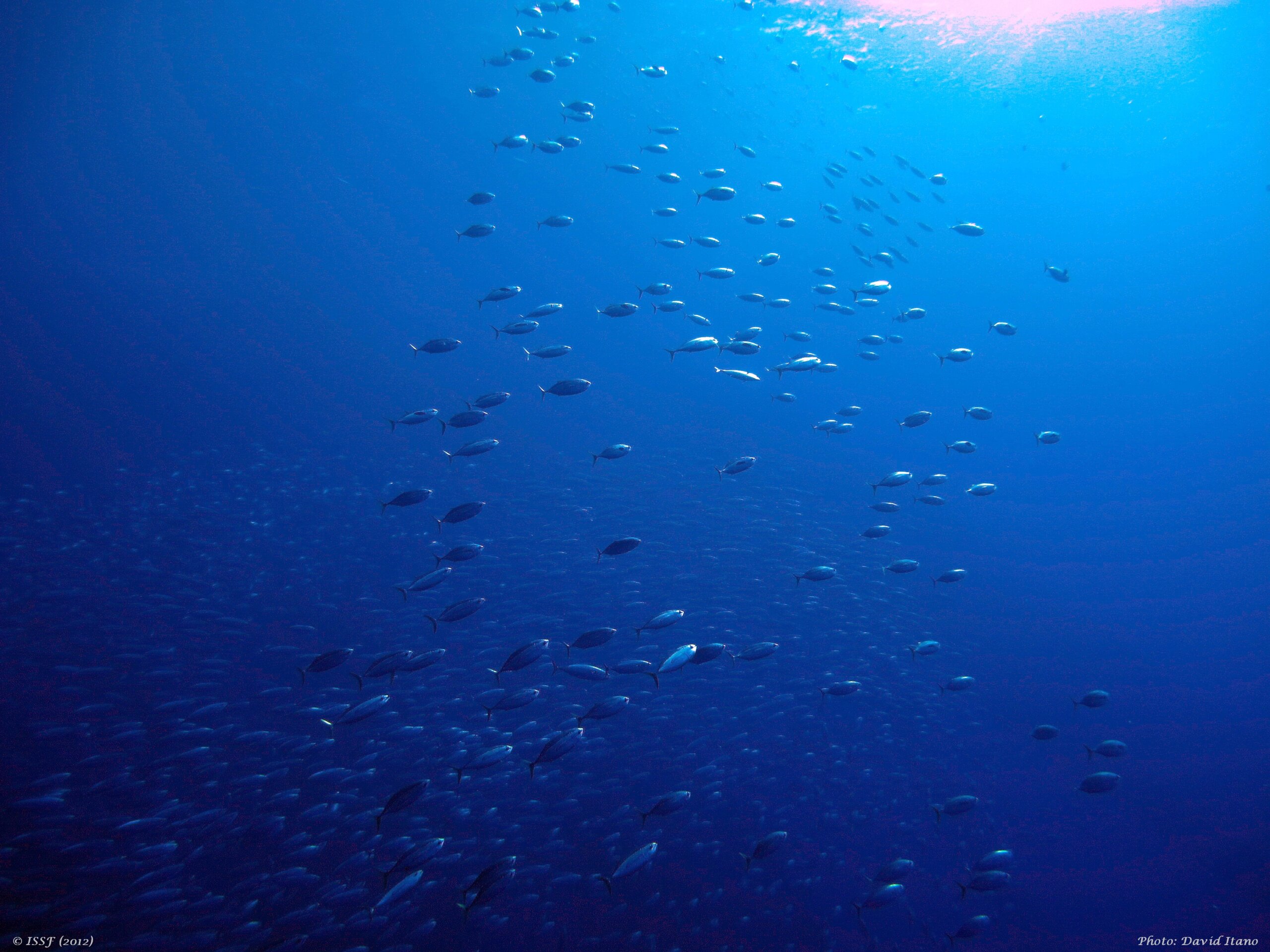
Recognizing Progress in Tuna Fisheries Management
A growing share of the global tuna catch comes from stocks that are not subject to overfishing, thanks largely to continuously improving management by tuna regional fisheries management organizations (RFMOs). As an advocate and partner for science-based reforms, ISSF has played a catalytic role in driving many of these improvements.
Through targeted research, technical guidance, and the development of practical tools, ISSF has supported RFMOs in advancing key areas of fisheries management — particularly in strengthening compliance frameworks and expanding the use of electronic monitoring (EM). ISSF has also led pioneering research on fish aggregating device (FAD) designs, promoting the adoption of non-entangling and biodegradable materials to reduce ecological impacts and support sustainable fishing practices. These efforts have helped RFMOs build more transparent, accountable, and effective management systems.
Drawing from ISSF’s recently updated RFMO Best Practices Snapshots series and related content, here is a look at how tuna RFMOs have made significant strides across four fundamental aspects of sustainable fisheries management.
Strengthening RFMO Compliance Processes
Robust compliance mechanisms are vital to ensuring that member nations of RFMOs implement agreed-upon conservation and management measures effectively. These processes not only evaluate how well members are complying and pinpoint areas in need of improvement, but they also improve the performance of the RFMO.
Tuna RFMOs around the world are working to enhance their compliance processes to foster greater accountability and transparency. For example:
- The Inter-American Tropical Tuna Commission (IATTC) held a special session of its compliance committee to explore improvements to its assessment procedures last year. As a result, it adopted a timebound work plan aimed at strengthening these procedures, including the development of specific responses to different categories of non-compliance.
- The International Commission for the Conservation of Atlantic Tunas (ICCAT) applied a standardized table of responses to non-compliance — adopted in 2022 — to guide its review of member state performance. Additionally, ICCAT strengthened its transshipment measure to further reinforce compliance of this activity.
ISSF’s “snapshot” on RFMO compliance processes underscores the importance of transparent and effective systems that build trust and confidence in RFMO fisheries management.
Advancing FAD Management
Fish aggregating devices (FADs) are widely used in tuna fisheries, and effective FAD management is essential. Our snapshot on FAD management highlights best practices and evaluates the progress made by RFMOs in implementing them. Key elements of responsible FAD management include setting limits on the number of deployed FADs, promoting non-entangling and bio-degradable designs, and strengthening tracking and reporting systems. When adopted, these measures help minimize environmental harm and support more sustainable fishing.
Among RFMOs, the Indian Ocean Tuna Commission (IOTC) has taken the lead with the most robust FAD management measures to date. A new measure adopted in 2024 introduced a clear definition for biodegradable FADs and set an ambitious timeline for their mandatory use. It also established an IOTC-wide FAD register, a standardized marking system, enhanced tracking and monitoring, mandatory reporting of lost or abandoned FADs, and stricter rules for activating and deactivating FAD buoys.
ICCAT has also made significant strides. In 2024, ICCAT adopted a phased reduction plan for the number of drifting FADs and committed to requiring fully non-entangling, net-free FADs made from biodegradable materials by 2028.
Expanding Harvest Strategies
Harvest strategies, also known as management procedures (MP), provide a structured, science-based approach to sustainable fisheries management. These strategies integrate monitoring programs, stock assessments, harvest control rules (HCRs), and pre-agreed management actions that align with the long-term goals of a fishery.
By outlining decision-making processes before stock conditions change, harvest strategies enable RFMOs to respond transparently and consistently to shifts in tuna stock status. Critically, they help insulate management decisions from short-term political pressures, reinforcing the role of scientific guidance.
ISSF and its partners have long advocated for the adoption of comprehensive harvest strategies that incorporate clearly defined HCRs and reference points. In recent years, RFMOs have made meaningful progress in advancing this framework for key tuna stocks. A new ISSF graphic highlights milestones achieved across all tuna RFMOs.
Recent RFMO Progress includes:
- WCPFC (Western and Central Pacific Fisheries Commission): A leader in harvest strategy adoption, WCPFC implemented a skipjack tuna MP in 2022. In 2023, it operationalized the procedure with new catch-and-effort controls for tropical tunas and adopted a harvest control rule for North Pacific albacore.
- Last year, ICCAT adopted a harvest strategy for Atlantic bluefin tuna that accounts for stock mixing complexities. Progress also included setting a management objective for Western Atlantic skipjack, advancing Southern Atlantic albacore toward MP adoption, and adopting interim objectives for bigeye, yellowfin, and Eastern skipjack.
- IATTC launched a scientist–manager dialogue group to accelerate MP development in 2025. The Commission agreed to collaborate with WCPFC on a stock-wide MP for Southern albacore. IATTC also adopted a harvest strategy for North Pacific albacore, including an HCR, and established interim reference points for skipjack tuna.
- IOTC adopted a MP for skipjack tuna.
Embracing Electronic Monitoring (EM) for Improved Observer Coverage
Observer programs continue to play a crucial role in monitoring fishing activity and collecting data for sustainable fisheries management. ISSF’s snapshot on observer requirements highlights best practices and evaluates RFMO progress.
Electronic Monitoring (EM) systems have emerged as an essential tool for observer programs to increase transparency and accountability in tuna fisheries. These systems, particularly valuable for large-scale longline vessels where human observer coverage is minimal, enable the collection of accurate and comprehensive data on fishing activity.
RFMOs have begun to formally recognize EM’s role in enabling monitoring, control, and surveillance best practices. In 2023, IOTC and ICCAT adopted EM standards, following years of technical work and negotiation. And in 2024, both IATTC and WCPFC introduced interim minimum EM standards for all major gear types—marking key progress toward broader EM implementation.
As demonstrated across compliance processes, FAD management, harvest strategies, and electronic monitoring, tuna RFMOs are making measurable progress toward more sustainable and transparent fisheries management. These advancements reflect an increasing commitment to science-based decision-making, accountability, and ecosystem protection.
While significant challenges remain, the strides being taken each year by RFMOs — documented through ISSF’s RFMO Best Practices Snapshots — demonstrate ongoing momentum. Continued collaboration, innovation, and adherence to best practices will be essential to securing the long-term health of tuna populations and the ocean environments they support.


